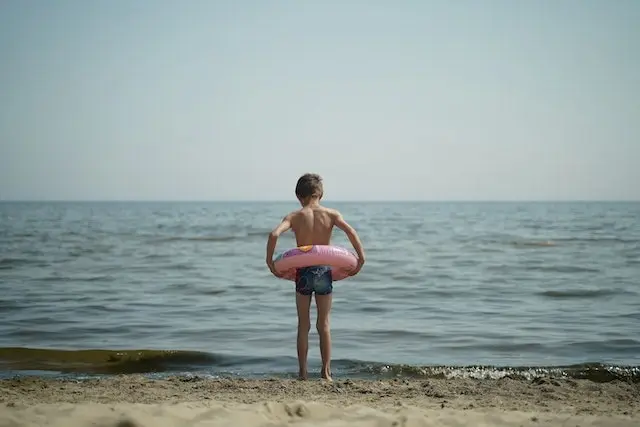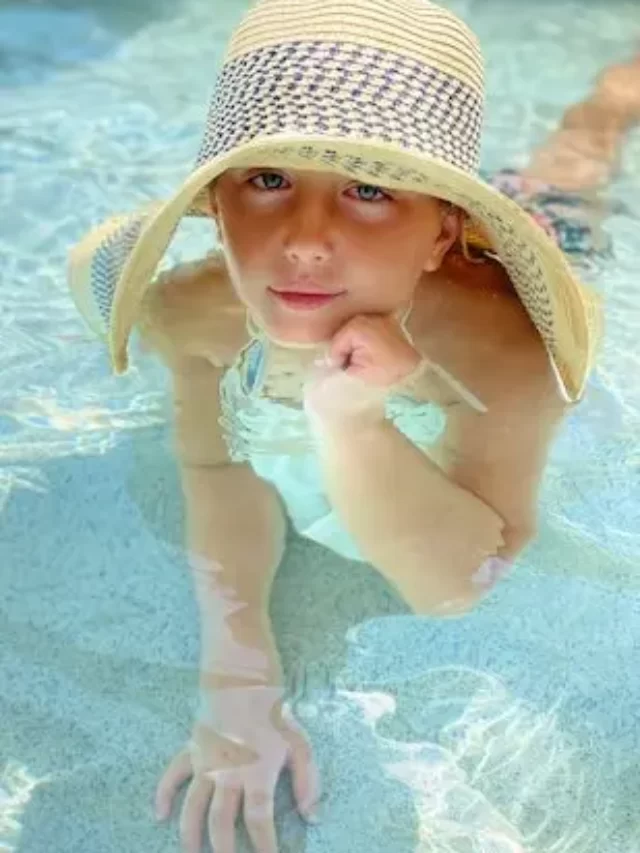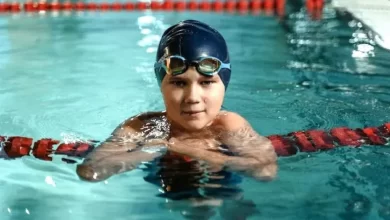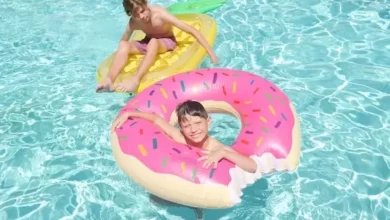Guardians of Innocence: How Baby Swim Caps Shield Against Chlorine Damage and Provides Safety
Welcome to our article on how baby swim caps play an important role in safeguarding your little one’s tender scalp from the potentially harmful outcomes of chlorine in swimming pools. As parents, we understand the importance of ensuring your baby’s safety and comfort during water play. In this article, we’ll address ten crucial questions about baby swim caps, providing expert opinions and recommendations. Let’s dive in!
Table of Contents
Why is chlorine a concern for a baby’s scalp?
- Chlorine as a disinfectant: Chlorine is normally used in swimming pools to disinfect the water. It is very effective at killing bacteria and stopping the spread of waterborne illnesses.
- Impact on delicate skin: However, for babies who have sensitive and delicate skin, chlorine can be problematic. Their skin is more permeable, meaning it can absorb substances more easily. This makes them more susceptible to the potential harsh outcomes of chlorine.
- Stripping natural oils: Chlorine, being a powerful chemical, can strip away the natural oils that protect the skin and keep it hydrated. This can lead to dryness, redness, and irritation, particularly on the scalp.
How does chlorine affect a baby’s scale?

- Oil balance disruption: The scalp naturally produces oil that acts as a protective barrier and moisturizer. Chlorine disrupts this delicate balance, leading to a decrease in natural oils. This disrupts the skin’s moisture level, potentially resulting in dryness and stiffness.
- Potential for irritation: Prolonged exposure to chlorine can lead to a condition known as “chlorine rash.” This is identified by red, itchy, and irritated skin. Babies with sensitive skin are extremely susceptible to this.
What Role Does Baby Swim Caps Play in Protection?
- Creating a physical barrier: A baby swim cap acts as a physical barrier between the scalp and the chlorinated water. It snugly fits around the head, effectively sealing off direct contact with the chlorine-fused water.
- Reducing chlorine absorption: By creating this seal, the swim cap significantly reduces the absorption of chlorine into the hair and scalp. This helps maintain the health and comfort of your baby’s sensitive skin.
- Overall protection: in essence, the swim cap acts as a protective shield, ensuring that the scalp remains shielded from the potential harm caused by chlorine.
Which Materials Are Best for Baby Swim Caps in Chlorinated Pools?

- Silicone and latex: Silicone and latex are highly recommended materials for baby swim caps in chlorinated pools.
- Durability and chlorine resistance: They are known for their durability and excellent resistance to chlorine. This exposure to chlorinated water without deteriorating.
- Snug and comfortable fit: Additionally, they provide a snug yet comfortable fit, ensuring that the cap stays in place and effectively seals out the chlorine. They are also soft and flexible, making them comfortable for your baby to wear.
How Should I Ensure the Proper Fit of the Swim Cap?
- Measurement: To achieve the right fit, measure your baby’s head circumference just above their eyebrows. This is a critical step in ensuring that the cap fits securely and effectively seals out water.
- Manufacturer’s sizing guide: Refer to the manufacturer’s sizing guide, as sizes may vary between brands. This guide will help you choose a size that offers a snug yet comfortable fit. It’s important to avoid a cap that is too tight, as this may cause discomfort.
- Secure seal: A proper fit ensures a secure seal without causing any discomfort or pressure points on the scalp. This is crucial for the cap’s effectiveness in protecting against chlorine.
Can a baby swim cap be used in natural bodies of water?

- Versatility of baby swim caps: yes, a baby swim cap is versatile and provides protection in various water settings beyond chlorinated pools.
- Barrier against pollutants: It acts as a barrier against potential pollutants, dirt, and natural elements that may be present in lakes, rivers, or oceans.
- Comprehensive protection: This versatility makes the swim cap a valuable accessory for a wide range of aquatic environments, ensuring your baby’s scalp is shielded from external elements.
How Do I Clean and Maintain a Baby Swim Cap?
- Rinsing after each use: After every use, it is important to rinse the cap properly with fresh water. This helps remove any residual chlorine or saltwater, which can potentially cause damage over time.
- Deeper cleaning with baby shampoo: For more proper cleaning, use gentle baby shampoo and lukewarm water. Slowly scrub the cap, making sure to clean all areas, and then rinse it properly.
- Proper drying before storage: At last, allow the cap to air dry fully before storing it. This step is crucial in stopping any moisture from being trapped, which could lead to mold or mildew growth.

Are there additional benefits to using baby swim caps?
- Hair management: Yes, besides chlorine protection, a baby swim cap offers additional advantages. It helps keep your baby’s hair off their face, ensuring a clear line of vision and an enjoyable swimming experience.
- temperature regulation: Additionally, it provides an extra layer of insulation. This helps regulate your baby’s body temperature in the water, ensuring they stay comfortable and content during their water adventures.
What styles and designs are available for baby swim caps?
- A wide array of designs: Baby swim caps come in a wide array of styles and designs to suit different preferences. You can find caps with playful animal motifs, vibrant patterns, and even popular cartoon characters.
- Colour variety: Additionally, there are caps available in a variety of bright and cheerful colours. These designs not only add a touch of whimsy to your baby’s swimwear but also make them easily recognizable in a crowded pool or water environment.
Can I personalize or customize my baby’s swim cap?
- Adding a personal touch: Yes, you have the option to add a personal touch to your baby’s swim cap. This can be a fun and innovative way to make the cap special.
- Methods of customization: Think about using fabric markers, iron-on patches, or even custom embroidery to add their name or a favourite design. Just make sure that any items used are safe and non-toxic. And it won’t cause any irritation to your baby’s skin.
Conclusion
Investing in a high-quality baby swim cap is a simple yet significant step towards ensuring a safe and enjoyable water experience for your little one. By providing a protective barrier against chlorine and offering additional benefits, a swim cap becomes an essential part of your baby’s swimming gear. We hope this guide has equipped you with the knowledge you need to make an informed choice. Here’s to many happy and splashing adventures!

Can a baby swim cap help prevent hair damage from chlorine?
Yes, a baby swim cap protects against chlorine, which can be harsh on hair. It successfully keeps chlorinated water from direct contact with your baby’s hair, lowering the risk of damage, dryness, and discolouration. While a swim cap is a great preventative measure, it’s also crucial to rinse your baby’s hair with fresh water after swimming to reduce any residual chlorine.
Are there special swim caps for babies with sensitive skin or allergies?
Yes, specialised swim caps are designed for babies with sensitive skin or latex allergies. Look for caps made from hypoallergenic materials like neoprene or specific latex-free alternatives. These caps are formulated to be gentle on delicate skin, reducing the likelihood of irritation or allergic reactions. Always check the product description or label to ensure it’s suitable for sensitive skin.




